
Alaea Sea Salt ~ Red Alaea sea salt is a natural product of Hawaii. 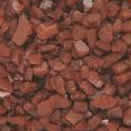 Alaean salt is not only an outstanding food product, but it is used by Hawaiians in cleansing, purification and blessing ceremonies as well as in healing rituals. They believe that when mixed with Noni leaves, it can be helpful in the prevention of some cancers. This salt is used in commercial salt scrubs and masks. The salt contains over 80 minerals, many of which are absorbed through the skin. The use of this salt in scrubs and other skin care products is believed to help draw out toxins from your body, leaving you with healthier skin and a healthier body.
Alaean salt is not only an outstanding food product, but it is used by Hawaiians in cleansing, purification and blessing ceremonies as well as in healing rituals. They believe that when mixed with Noni leaves, it can be helpful in the prevention of some cancers. This salt is used in commercial salt scrubs and masks. The salt contains over 80 minerals, many of which are absorbed through the skin. The use of this salt in scrubs and other skin care products is believed to help draw out toxins from your body, leaving you with healthier skin and a healthier body.
Anglesey ~ The seawater in the Menai Strait, around the Isle of Anglesey in Wales, is used to produce sea salt by the Halen Mon Anglesey Sea Salt company.
Artisan Salt ~ The term "artisan" implies that the salt is produced by hand. There is not really a consensus about what exactly makes a salt an artisan salt. In general, the term refers to salts that are produced by means that go above and beyond simple evaporation. They typically include salts that are smoked or combined with other ingredients to produce a blend. Geographical areas that are not favorable to natural evaporation turn to the use of solar houses and other techniques for the drying of salt.
Autumnberry Sea Salt ~ A sea salt blend consisting of medium grain sea salt, dried cranberries, rosemary and orange oil. The sea salt originates from the Mediterranean Sea in the south of France
Bamboo Salt ~ Bamboo salt is actually a combination of four key ingredients: sea salt, bamboo, pine wood and yellow clay. Developed over 1000 years ago in Korea, this is a salt that is typically made by roasting/heating sea salt in bamboo. The process usually involves heating the salt with pine wood (either over open flames or in a kiln) and then capping the product with yellow clay or having the yellow clay as the main substance that the kiln is made from. The salt can be eaten as well as used as a medicinal substance, as part of a skin smoothing treatment and as a hair wash.
Black Salt ~ This is a natural mineral salt (aka a rock salt) that is produced from ancient volcanos. It is mainly sodium chloride with sulphur and other naturally occurring rock impurities. Particularly pungent in odor, it is used extensively in India and Pakistan. Also known as Kala Namak, Indian black salt, black Indian salt, and Sanchal.
Blended Sea Salt ~ This is (usually) a natural sea salt that is blended with other ingredients to achieve particular flavor, texture and or araoma. Typical blended ingredients include dried flowers or flower buds, another spice, and citrus oils or zests.
Bolivian Rose Salt ~ This is a mined sea salt that is harvested from the Andes Mountains in Bolivia. It has a high essential mineral content and a lovely pale rose to pale orange color.
Canning Salt ~ This is salt that is used in canning. It is fine grained and free of iodine. It is not regular "table salt". There are no additives and it lacks anti-caking ingredients. This same "type" of salt is used for preserving sausage and salt-cured ham. Pickling salt is another name for canning salt. Iodine free salt is desirable, particularly when making pickles. The pickles/cucumbers stay bright and green and the liquid remains clear. Iodine in the salt can sometimes darken the pickles and cloud the liquid.
Caviar and Pearl Sea Salt ~ See Salt Pearls. This is also known as Caviar Sea Salt.
Celtic Sea Salt ~ This is another name for Sel Gris. The Celts made salt in Brittany long before the Romans were there. The name for the salt and the salt process still remains.
Citric Salt ~ This is also known as citrus salt. See Sour Salt
Cooking Salt ~ The definition of the term cooking salt goes all over the place. In some countries, cooking salt is synonymous with table salt. In some places it is used to describe any type of salt used in cooking. Generally, the consensus is that cooking salt refers to a refined salt. That is, a salt that has been processed in some way, usually by adding anti-caking agents and iodine.
Curing Salt ~ 94% salt and approximately 6% sodium nitrate, usually dyed a pinkish color for easier recognition.
Cyprus sea salt ~ This is sea salt that is harvested off the coast of Cyprus. Large pyramid shaped crystals define this unique salt. Like many natural Mediterranean sea salts, this has a light and mild flavor.
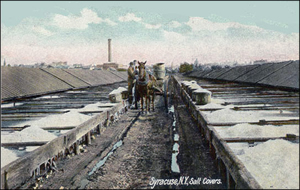
Dairy Salt ~ There is simply no consensus about what dairy salt actually is. One definition says that it is a refined salt that has been used in past times to preserve butter; that it has a medium grain size and is also known as pickling salt. Another definition cited that dairy salt is finer and purer than normal salt (whatever that actually means). Another definition claims that dairy salt is any salt that is used to pull moisture from what you are trying to cure – such as cheese. And yet another definition is that dairy salt is the salt that is fed to dairy cows.
Prior to 1900, the vast majority of salt in the United States came from Syracuse, New York and surrounding areas. Dairy salt was a highly sought after commodity. At this time in history, the definition of dairy salt was salt that went into the making of butter. The American Dairy Salt Company was one of the largest salt companies of that period.
Durango Smoked Sea Salt ~ This is a product made in the state of Washington, produced by smoking natural sea salt flakes over Hickory wood. It is excellent on salmon.
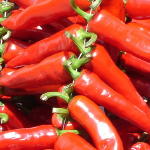
Espelette Pepper Salt ~ Espelette is a town in France. The peppers that are grown there are hot and are used both in dried and fresh form. The peppers from this town have become so famous world-wide that they are referred to as Espelette Peppers or Espelette chilli peppers. The dried form of this pepper is mixed with Fleur de Sel to create an outstanding and spicy artisan salt.
Fine and Coarse Crystal Sea Salt ~ A traditional salt that is finished in a traditional manner by hand harvesting, solar evaporation in salterns or salt pans. This traditional salt remains in an unrefined condition and can be milled to to any grain including fine, medium and coarse. Moisture content goes from moist to dry, and colors go from greyish into the whites. These salts are considered all purpose.
Finishing Salt ~ Salt that is used on top of food, after it has finished cooking. It adds flavor, texture and sometimes color, to the finished dish. It is used to impart a crunch to the food as well as to add a heightened complexity of taste. Finishing salt can be amazing when used on top of corn on the cob, fresh vegetables, as a garnish on a beautiful dollop of butter, on eggs, popcorn, chocolate or strawberries. The possibilities are literally only limited by your imagination!
Many different types of sea salt can be used as finishing salts. These include Fleur de Sel, Himalayan pink salt, Hawaiian black salt aka Hiwa Kai, Hawaiian red salt aka Alaea, French grey salt aka sel gris, flaked salt, smoked sea salt and others.
Fior Di Sale ~ Harvested from the Mediterranean by master salt makers and only on windless mornings.
Flake Sea Salt ~ Flake sea salt crystals are very crisp, dry, thin and light. Crystal shapes include a pyramid shape and others are like tiny shells. They exhibit the same like behaviors as snowflakes since no two are alike. Flake salt adheres well to finished dishes. Flake sea salt dissolves rapidly and is best utilized by sprinkling on the food dish right before serving. Flake salt is a favorite with salad, vegetables, and desserts.
Fleur de Sel ~ French phrase meaning "Flower of Salt". This is a natural sea salt that is hand harvested. It is the top layer of the salt crust of "sel gris" and is harvested daily. Fleur de Sel is used as a finishing salt or condiment – and not traditionally used a seasoning in the cooking process. It contains less sodium chloride and more trace elements than common salt.
Flor de Sal ~ Spanish phrase meaning "Flower of Salt". The equivalent of Fleur de Sel.
Flower of Salt ~ The English translation of the French phrase Fleur de Sel.
Grey Salt ~ See Sel Gris
Guerande ~ An ancient town in France, on the Brittany coast. The premier Fleur de Sel is harvested here.
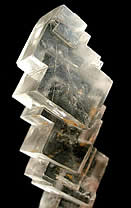
Halite ~The most common name for halite is rock salt. This is a naturally occurring mineral, whose chemical composition is NaCL - sodium chloride. Halite usually has many impurities. The crystals are isometric in shape and truly beautiful.
One of the more common uses of halite is to manage ice on roads. However, there is a use for this in the kitchen. When you make homemade ice cream, put rock salt into the container of ice that surrounds the can. The brine made with rock salt and water has a lower freezing point than water alone. So, the ice melts faster, and the endothermic process of the melting helps your ice cream to freeze faster.
Hawaiian Black Lava Sea Salt ~ This is another name for Hiwa Kai Sea Salt.
Hickory Salt ~ This is a sea salt blend combing flake sea salt, paprika, smoked malt and white pepper.
Himalayan Pink Mineral Salt ~ This is an excellent natural salt for use as both a finishing salt and a seasoning for food. The culinary uses of this range from salt roasting a fish with coarse grinds to rimming drinks with a fine grind. It is classified as a marine fossil salt. It is excellent as a bath salt and is said to increase circulation, lower blood pressure, help with cleansing the body of toxins, and to soothe sore muscles and joints. Its is also said to be very effective for use in heavy metal detoxification.
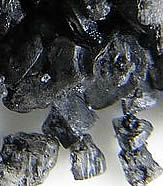 Hiwa Kai Sea Salt ~ This salt is a combination of solar evaporated Pacific sea salt from Hawaii and activated charcoal. The color is a deep rich black and it is shiny and silky in feel. It is primarily used as a finishing salt. This is also known as Black Hawaiian Sea Salt and Hawaiian Black Lava Sea Salt.
Hiwa Kai Sea Salt ~ This salt is a combination of solar evaporated Pacific sea salt from Hawaii and activated charcoal. The color is a deep rich black and it is shiny and silky in feel. It is primarily used as a finishing salt. This is also known as Black Hawaiian Sea Salt and Hawaiian Black Lava Sea Salt.
Iodine ~ A small amount of iodine is important for proper nutrition in helping to prevent thyroid disease. Salt fortified with iodine has been used to prevent deficiencies for many years. The Michigan State Medical Society launched a goiter prevention program using iodized salt in 1924. An adult only requires around one teaspoonful of iodine over a lifetime. The consumption of fish once a week is usually enough to fulfill the average iodine requirements.
Kala Namak ~ Also known as Sanchal and black salt, this is an Indian mineral salt. Whole crystals are brown to dark violet in color. When finely ground, the salt turns a light pink to purple in color. It is mined extensively in central India. Also see black salt.
Kosher Salt ~ Kosher salt is one that has been certified as Kosher by a certifying organization, like the Orthodox Union.
Lavender Salt ~ A combination of sea salt and lavender buds. Use this to season the top of grilled fish or as a rub on your fish before grilling. Also used as a finishing salt on roasted vegetables and salads.
Maldon Sea Salt ~ A flaky sea salt produced by the Maldon Crystal Salt Company in England.
Maldon Sea Salt Flakes ~ This English company has been in business since 1882 and is still run by the same family. Their sea salt flakes are available in large economy sizes - perfect for a smaller restaurant or hotel.
Maldon Smoked Sea Salt ~ Sea salt flakes that are cold smoked with oak and hardwoods. This particular salt is produced by the Maldon Cyrstal Salt Company.
Margarita Salt ~ 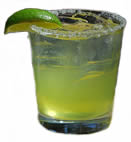 This is the salt that goes around the rim of a margarita glass. Sounds simple, but what type of salt is this really, and how do you get the salt to stick? The salt that's used is a coarse grained sea salt. You want to use a salt crystal that has lots of irregular angles to get that nice, light crunch. And, you want the salt to dissolve quickly. Do not use fine salt or plain "table salt". It will not produce the correct taste or texture. The best types of salts to use are Fleur de Sel, Coarse Sea Salt or Flake Salt.
This is the salt that goes around the rim of a margarita glass. Sounds simple, but what type of salt is this really, and how do you get the salt to stick? The salt that's used is a coarse grained sea salt. You want to use a salt crystal that has lots of irregular angles to get that nice, light crunch. And, you want the salt to dissolve quickly. Do not use fine salt or plain "table salt". It will not produce the correct taste or texture. The best types of salts to use are Fleur de Sel, Coarse Sea Salt or Flake Salt.
How do you get the salt to stick to the rim of the glass? Either rub the rim with a wedge of lime first, or dip the rim of the glass into lime juice. Then, simply lightly dip the rim into a flat dish of coarse salt.
Are you someone who loves making and giving great original food gifts? Create your own colored margarita salts and give these as holiday or party gifts! Just combine approximately 6 Tbsp. Of coarse sea salt with 4 drops of food coloring. Mix well in a plastic bag. To deepen the color, add additional drops of food coloring, one at a time.
Mined Sea Salt ~ See Peruvian Pink, Bolivian Rose and Himalayan Pink.
Nazuna Sea Salt ~ Harvested in Japan, this is a strong and briny flavored sea salt. Because of its intense flavor, this is often paired with a sweet soy sauce. The crystals are white and light. Like all naturally occurring sea salts, this will add a nice crunch when used as a finishing salt.
Paakai ~ The Hawaiian word for salt.
Pearl Salt ~ See Salt Pearls.
Peruvian Pink Salt ~ This is another wonderful mined sea salt. It is light pink in color, and has a high moisture content. The salt comes from the Andes Mountains in Peru. Individual families hand harvest the salt from the terraces fed by natural springs. The salt is loaded onto burros and descends down the mountains - truly a labororious process. It's a very crisp and crunchy sea salt with a strong flavor but not overly salty. Lovely on fruit (including tomatoes!).
Pickling Salt ~ See Canning Salt.
Pope's Salt ~ A medium fine grain sea salt hand harvested from Cervia, Italy. It is the first harvest of the season and is the salt sent to the table of the Pope. Also known as Il Sale dei Papi.
Rock salt ~ See Halite
Sal Fiore ~ Italian phrase meaning "Flower Salt". The equivalent of Fleur de Sel.
Salt Pearls ~ These are literally balls of salt. They can form naturally or can be produced by tumbling salt in a drum. They are also known as Pearl Salts and come in many sizes. Primarily used as a finishing salt, salt pearls can be so large that you need to grate them (by hand, not in a grinder), or small enough to put in a salt dish and serve at the table. Reminiscent of the shape and size of caviar, these pearls are also referred to as Caviar Sea Salt. The salt pearls most talked about come from Lake Assal in Africa. They form naturally along the briny edges of the lake in Djibouti.
Sel Gris ~ This French phrase translates literally to "Grey Salt". The best Sel Gris is harvested by hand from the coast of Brittany, in France. Chambered clay beds are sculpted by hand in the salt flats. Water moves into the chambers of each bed. The salt is raked towards the sides of each chamber and shoveled into piles. This raked up salt pulls some of its color from the clay. It is left to dry for a bit and is then harvested as Sel Gris. It is the final product in the salt flats, after the Fleur de Sel has been harvested off. It is also known as Celtic Sea Salt.
Smoked Sea Salts ~ These are natural sea salts that are endowed with a smoky flavor. There are a couple of methods of imparting a smoked flavor into salt. The preferred method is to smoke the salt (in a cold smoker) over a wood fire. The other method is to infuse the salt with smoky flavor by adding a liquid smoke flavoring to the crystals. This method is really a smoke flavored salt and not a true smoked salt. The salt smoked over fire takes on the flavors of the particular wood (s) used in the fire – whether it be hickory, mesquite, alder or a combination. Smoked sea salt can be made with salt flakes or crystals – but always with a sea salt or a mined salt. It is not made with regular "table salt".
Sour Salt ~ This is powdered crystals of citric acid and not actually a natural salt product. It can be used in cooking and canning. When used in canning, sour salt can be added to the cooking liquid. This will increase the acidity of the food and help preserve the color. When used in cooking, it can drastically enhance the tartness of an already citric based recipe, such as a lemon or orange based dish. A very small amount goes a long way!
Table Salt ~ The chemical compound is sodium chloride ( NaCl ). Table salt is also referred to as "common salt" or "common table salt". Most salt classified as table salt, in the U.S, has potassium iodide as an additive. The theory is that the potassium iodide promotes better thyroid function and helps to prevent the development of goiters.
Table salt is generally fine grained and is used to season and preserve food. The most commonly found table salt goes through some kind of high heat processing, which generally removes many, if not most, of the naturally occurring minerals found in sea salt. Common table salt typically contains anti-caking agents and additives to prevent moisture absorption.
Trapani ~ Trapani is a city on the west coast of Sicily. Beautiful flaky white sea salt is harvested from the salt pans of Trapini, that are between Marsala and Trapani.
Yakima Smoked ~ This is a smoked salt produced in Yakima Valley, Washington. Natural flake sea salt is smoked over apple wood to produce a salt with an earthy yet sweet flavor.
Top of page
![]() Home
Home ![]() About
About ![]() Sitemap
Sitemap ![]() Credits
Credits ![]() Privacy
Privacy ![]() Advertise
Advertise ![]() Contact
Contact ![]()
